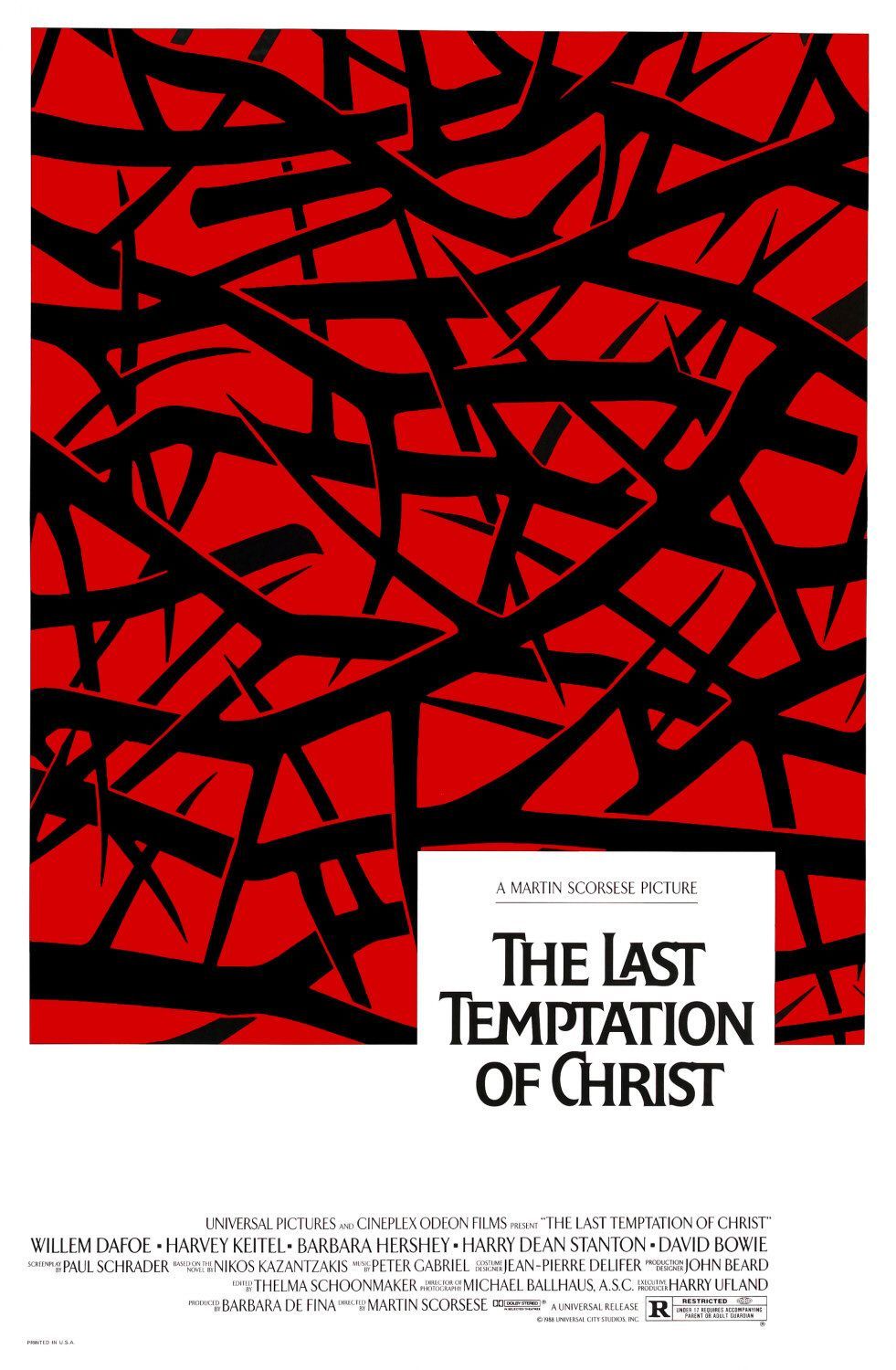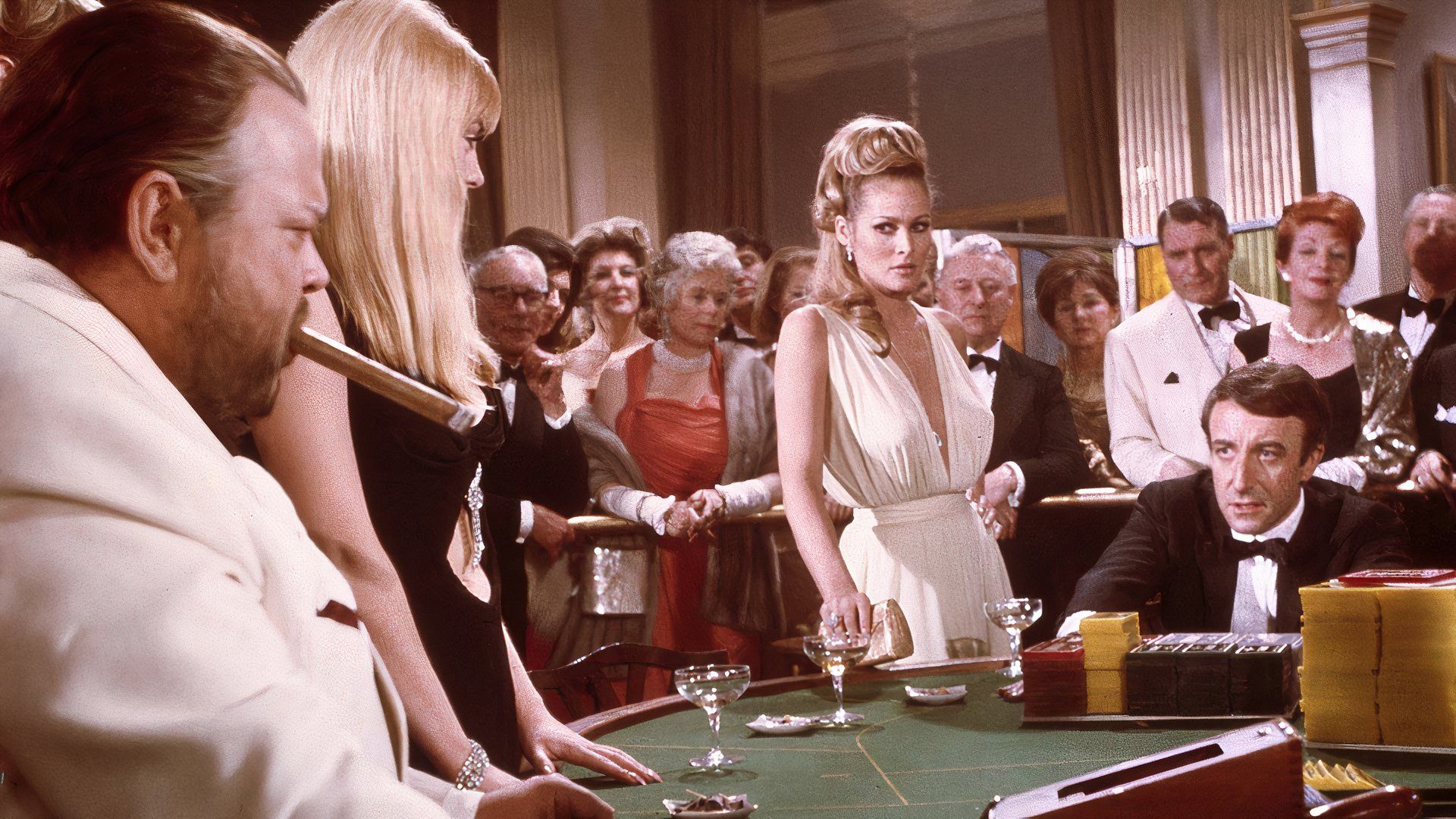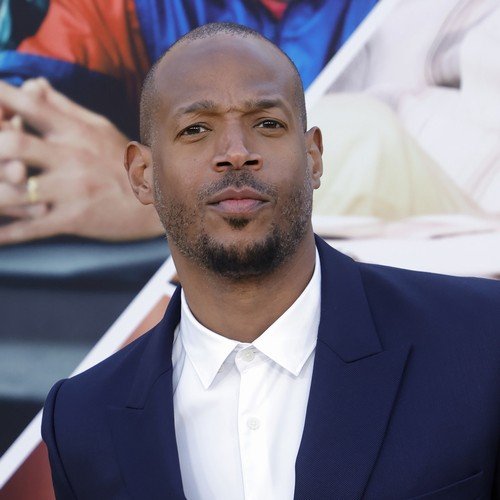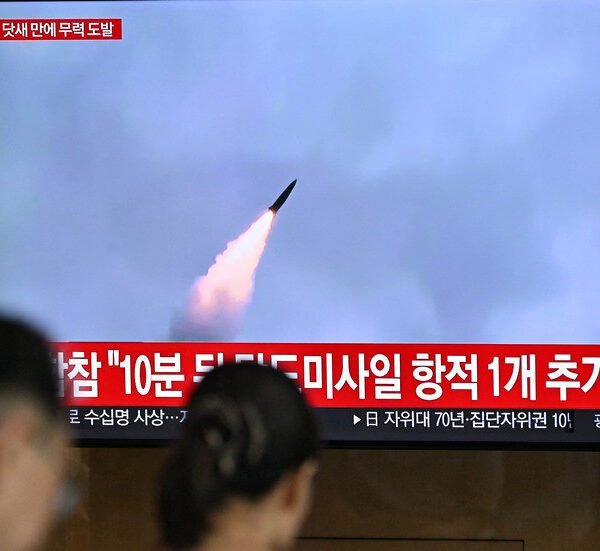Summary
- Films like L’Age d’Or and Mamma Roma sparked real-life riots due to their controversial content and themes, challenging societal norms.
- The Birth of a Nation and The Last Temptation of Christ faced violent protests and backlash for their portrayal of sensitive religious and racial issues.
- Even seemingly harmless films like Casino Royale or Rock Around the Clock can lead to destructive riots when emotions run high among movie-goers.
Film has long been the most powerful artistic medium for stirring up civil unrest, given its often visceral and provocative nature. When filmmakers dare to tackle subjects like religion and politics, films are often met with harsh resistance, even riotous protest. Filmmakers have met opposition, whether their films are well-meaning — or if they’ve used film as propaganda for bigoted causes. Films that pushed boundaries in depicting sexuality or agitprop have summoned violence, vandalism and injury.
Still, even something as simple as a concert film can conjure enormous emotions that lead movie-goers to trash cinemas and destroy property. Some filmmakers like Pier Paolo Pasolini and Theo van Gogh have even been murdered for making films that threaten the ideologies of those opposed. At the core of these conflicts are issues of free-speech, censorship and religious and ideological intervention in cinematic art. The following are 10 films that have caused real-life riots.
10 L’Age d’Or
La’Age d’Or was released early in the film career of surrealist director Luis Buñuel, who collaborated with painter Salvador Dalí on a film that included risqué sexual imagery, even for forward-thinking Parisians.
A couple’s attempts to consummate their romance goes sideways in the experimental film, which sees them eventually making love in the mud during a religious ceremony. Among the surrealist imagery of swarming insects and debauchery, was a controversial scene where actress Lya Lys fellates the foot of a statue.
A Riotous Reaction in the Streets and Cinemas of Paris
Needless to say, for a 1930s film, this type of imagery was sensationalist. After French censors approved the premier of the film it became a hit. Soon after, a right wing group, the League of Patriots, interrupted a screening by throwing ink at the screen and assaulting viewers who opposed them. Then, they stormed the cinema’s lobby, defacing paintings by Dalí, Man Ray, and Yves Tanguy.
Fearing further repercussions, the film’s financiers kept it out of distribution for decades, despite a few notable screenings in museums and galleries. Rent L’Age d’Or on Prime Video
9 Mamma Roma
Pier Paolo Pasolini is one of the most controversial directors in the history of Italian cinema. One of his films, Mamma Roma, centered around the true story of convicted criminal Marcello Elisei. When the film premiered at the Venice FIlm Festival in 1962, police complaints were filed for alleged indecency in the film.
After the film’s premiere in Rome, Pasolini was confronted by a mob of neo-fascists, resulting in a riotous, injurious scuffle that foreshadowed Pasolini’s horrific death over a decade later.
Pasolini’s Unsolved Abduction and Harrowing Murder
Pasolini’s anti-fascist views, gay lifestyle, and hyper-political films often put him into conflict in Italy. In 1975, Pasolini was abducted in Ostia, where his body was found later on the beach.
Almost unrecognizable, Pasolini was savagely beaten, mutilated and run over several times with his own car. While the case remains unsolved, newly uncovered evidence suggests a far-right group known as Banda della Magliana may be responsible for his abduction and murder. Stream Mamma Roma on The Criterion Channel
8 The Cabinet of Dr. Caligari
When discussing the history of The Cabinet of Dr. Caligari, it’s difficult to tell where the facts end and the legends begin. The silent film was produced in 1920 in Germany by director Robert Wiene, in a heavily German Expressionist style, with twisted visuals evoked by snarling sets and a deranged plot.
The film was proto-horror, arthouse and fantastical all at once, and when it premiered in Germany, it was heavily promoted. In attempting to find theaters in other countries, however, Caligari ran into some trouble.
An Innovative German Film Met Opposition Worldwide
The First World War had left many countries dubious of importing German goods, even films, after their role in the global conflict. Although a relaxation of these policies allowed Caligari to be premiered in certain cities like Los Angeles, groups like the American Legion staged riotous protests, and the film was eventually banned in L.A. and other cities. Stream The Cabinet of Dr. Caligari on FuboTV
7 Casino Royale
Casino Royale showed what happens when a drunken mob of 8,000 people show up to the cinema for a free movie. After the Sack Savoy Theater in Boston offered free food and admission for a late night showing on the radio, they got more than they bargained for with a queue of thousands reaching down the block. The panicked theater administrators clearly forgot they were in Beantown and tried to change the showtime. Oops.
A Crowd of Bostonians Goes Haywire in Beacon Hill
Every Boston police officer available was needed to calm the riotous crowd. About 30 people were hurt, including two reporters, and 15 arrests were made. Two fires began inside the theater, and the audience got soaked when the sprinklers came on. We know this wasn’t the most beloved James Bond spoof ever, but dang! Stream Casino Royale on PlutoTV
6 Electric Daisy Carnival Experience
The premiere of the Electric Daisy Carnival Experience was brought to a halt when hundreds of uninvited fans clashed with police in Hollywood. After DJ Kaskade, featured in the concert film, tweeted out, “Let’s see if the magic of social networking will work today. Today@6PM in Hollywood @Mann’s Chinese Theater!” The pied piper sounded the call.
Alas, young Kaskade forgot that the Chinese Theater is in the middle of one of the seediest neighborhoods in Los Angeles, already loaded with tourists, unhoused street performers and plenty of crime.
A Riotous Band of Concert-Goers Attacks the Coppers
When a huge mob arrived at Hollywood’s most-storied cinema, L.A.P.D. closed down Hollywood Boulevard, then were met with opposition from some fans — who reportedly began fighting and throwing bottles at police cars. The cops fired riot bean bag guns into the crowd and the road closures caused traffic jams in the already gridlocked heart of Hollywood.
Those merely in Hollywood for the In-N-Out burgers and Ripley’s Believe-It-Or-Not got way more than they bargained for, adding to the growing legend of Electric Daisy Carnival concerts. Stream Electric Daisy Carnival Experience on Tubi
5 Rock Around the Clock
Rock Around the Clock proved how Rock ‘n’ Roll’s early days often sent youthful audiences into a frenzy — even in movie format! Such was the case when the concert film, which included rock pioneers Bill Haley and the Comets, hit screens in Europe. When the film was screened in Germany in 1956, kids went berserk. Many had been living under the oppressive German Democratic Republic, and weren’t ready for the Rock Shock of a revolutionary sonic movement still in its infancy.
American Rock Exports Sent Europe into a Tizzy
We’ve all heard how the British Invasion of bands like the Beatles and the Kinks caused American kids to riot in the ’60s. Long before that, Rock Around the Clock did so in reverse, using early rock groups including The Platters and Freddie Bell and the Bellboys. Youth movements were trashing theaters across Germany, Denmark and Austria — thanks to the film’s anti-establishment themes motivating some nefarious activity. Stream Rock Around the Clock on FuboTV
4 New Jack City
New Jack City was released the same week, in March of 1991, of the infamous beating of Rodney King by four LAPD officers that was caught on a nearby camcorder. Needless to say, the city of Los Angeles was already experiencing serious civil unrest.
The Kids Aren’t Alright When They’re Prohibited From Seeing Nino Brown and the Cash Money Brothers
After a few hundred people with tickets who had shown up in Westwood Village for a showing of New Jack City were turned away, the bad apples of the bunch rampaged through Westwood — some looting stores, throwing beer cans, vandalizing cars and tearing branches off of trees to smash store windows.
This was still a month before Rodney King’s famous “Can we all get along?” speech, and this isolated melee was a strange precursor to the perilous L.A. Riots a year later, touched off by those same 4 officers being acquitted despite the frightening use of force that nearly killed King. Stream New Jack City on Showtime
3 The Birth of a Nation
Watching The Birth of a Nation today shows how truly backwards America was in the 1910s, with filmmaker D.W. Griffith, both a technically innovative director and an outright racist, painting the Ku Klux Klan as heroic saviors and using White performers in blackface to denigrate Black identity in America. Without hesitation, this could be considered one of the darkest chapters in the history of American entertainment.
The film was toured around the nation in roadshow format, including being screened for President Woodrow Wilson, which Griffith used for promotion. When screened for audiences in the Northeast, it was met with violent protests in cities like Boston.
The Release of Birth of a Nation Was Controversial. The Aftermath… Riotous.
The Ku Klux Klan preceded the creation of The Birth of a Nation (originally titled, The Clansman) but you might not have known that, given that this film, single-handedly, was the greatest propaganda piece for the cultish KKK and their scary murder pajamas. The film created agitprop about a South ‘ravaged’ by Northern carpetbaggers and freed Black people, perpetuating White fears about a newly integrating America.
Guess what happened next — the growth of the KKK and a rash of riotously violent crimes against Black communities throughout the Southern States — also outbreaks of violence directly following screenings of this film in coastal American cities.
As a moment in cinematic history, The Birth of a Nation is incredibly important. As a chapter in American racial history, it’s horrifically emblematic of a lurid series of events that America should never forget. Stream New Jack City on Tubi
2 The Message (1977)
The Message was the 20th Century version of an age-old religious dilemma. Directed and produced by Moustapha Akkad, the film made a classic mistake with the visual depiction of the Prophet Muhammad, forbidden in some interpretations of the Quran, and always sure to cause controversy — sometimes even violent backlash.
Despite Good Intentions, Skirting Traditions of Fundamentalist Islam Backfired Big Time
In July 1976, five days before the film opened in London’s West End, threatening phone calls to a cinema prompted Akkad to change the title from Mohammed, Messenger of God to The Message, at a cost of £50,000. The film was banned in Egypt, Kuwait, and Saudi Arabia, but not before rioting and picketing broke out in several cities across the Middle East. Despite the name change and a new edit, the damage had already been done. Rent The Message on Google Play
1 The Last Temptation of Christ



The Last Temptation of Christ
- Release Date
- August 12, 1988
Considering how virulently violent the movies made in the first decades of Martin Scorsese’s directing career were, The Last Temptation of Christ was tame by comparison. Still, viewed through the eyes of the late-’80s wave of Evangelical Christians and Old Guard, card-carrying, Roman Catholics, this depiction of Christ was no bueno.
The film, after all, had a controversial scene that shows the newly married Jesus and Mary Magdalene having sex. Further controversy centered on the depiction of Judas as ethically strong and devout, and Jesus living as a normal man instead of a messianic figure.
Scorsese Cast Dafoe as Christ, Then Made Himself Persona Non Grata in Vatican City
Imagining the real lives of worshipped figures using film has always been an enterprise fraught with pushback, in this case a full-scale protest outside of movie theaters by Christian groups like the CCC, whose founder Bill Bright offered to buy and destroy every print of the film.
One protest in Century City saw a screaming clash between picketers and Scorsese fans. It became one of the greatest 1st Amendment battles ever waged over a movie, as franchises like Blockbuster Video and Universal Pictures either banned or endorsed the film. The fracas only added to Scorsese’s risk-taking, rule-breaking legacy.



















